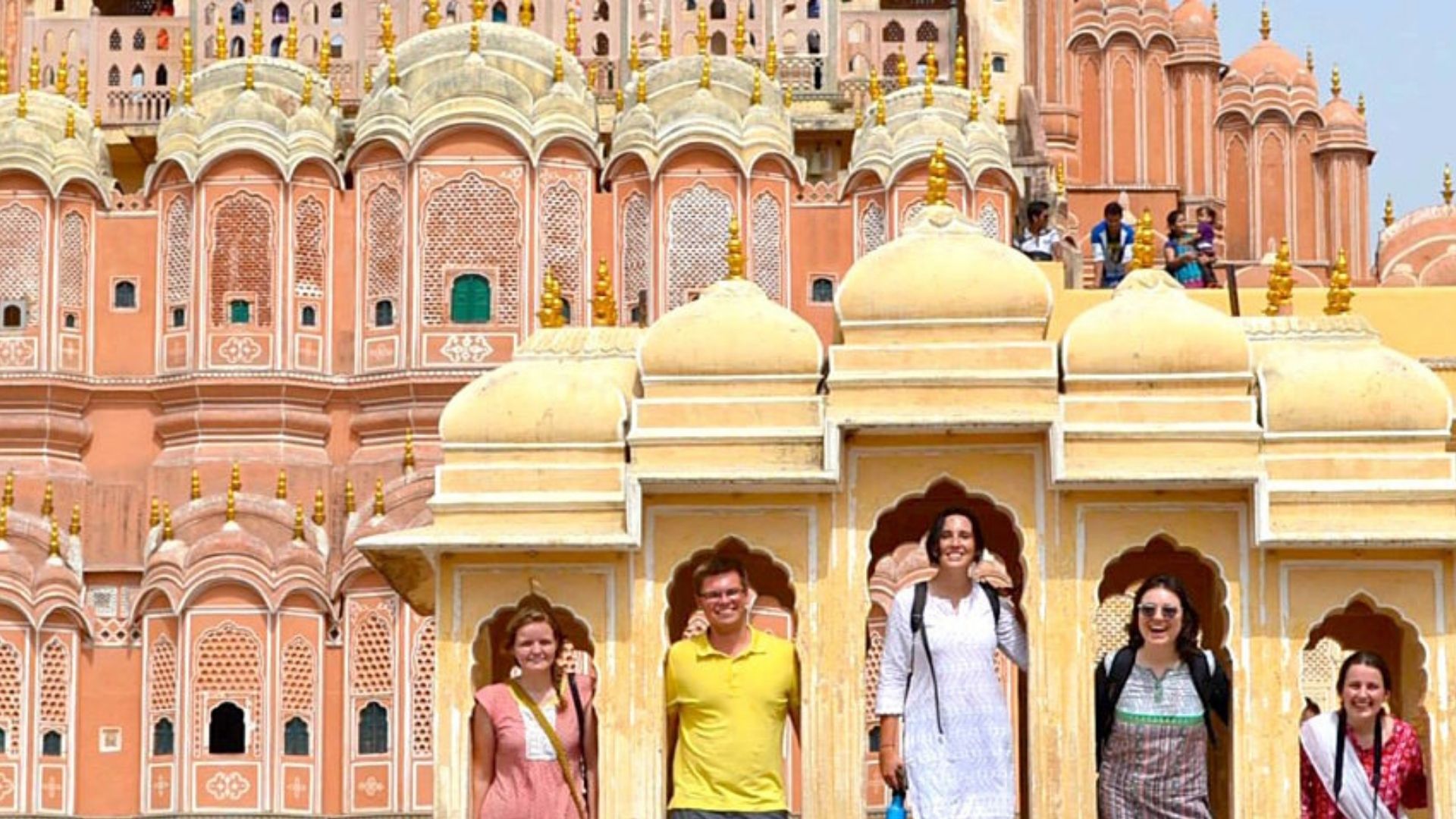American students experience Indian culture through its languages.
July 2019

The Critical Language Scholarship Program provides intensive language instruction and structured cultural enrichment experiences. Screenshot courtesy https://clscholarship.org/
For American college students who wish to delve into the culture and languages of India, the Critical Language Scholarship (CLS) Program provides a great opportunity. It allows them to be enrolled and immersed in intensive language instruction and structured cultural enrichment experiences designed to promote rapid language gains.
The CLS Program, sponsored by the U.S. Department of State and administered by American Councils for International Education, plays an important role in preparing students for increasing competitiveness and to be a part of the globalized workforce. The program concentrates on languages that are of critical importance to U.S. national security and economic prosperity. These include languages that are less represented in academia, like Azerbaijani, Indonesian and Korean, or languages like Swahili, Arabic, Persian, Russian, Japanese and Chinese, which have a better representation at U.S. universities, but are still not taught as widely as would be ideal. When it comes to languages of India, four languages are covered by the CLS Program: Bangla, Hindi, Punjabi and Urdu.
The CLS Program covers most of the costs of participation in its overseas institutes. The scholarship is quite competitive. To apply, students need to offer compelling reasons for how studying one of these languages and living in one of its regions would enrich their field of interest and study. Past applicants have typically included students working in the fields of economics, anthropology, art history and English literature.
Studying Hindi
Hindi is one of the most spoken languages in India and the world. It is one of the critical languages owing to its growing international importance in the fields of business, technology, entertainment and more. However, the language is still largely underrepresented at U.S. universities.
The CLS Program site for Hindi is in Jaipur, and it takes place every summer. “Hindi is the first foreign language I’ve learned and I have found it useful in my daily life since returning from the CLS Program,” says Ariana Pemberton, an alumna of the Hindi program and a graduate from University of California, Berkley, in art history. “I speak Hindi every day at work with my co-workers and customers, and have been able to establish good contacts with people related to my field of interest.”
This type of success is typical of the program, and illustrates its ability to bridge the practical and scholarly applications of language acquisition. “While studying in India, I encountered many locals who asked lots of questions about America and Americans,” continues Pemberton. “This experience made me reflect on the assumptions about India and Indians in America. Now, I am reaching out to communities around me in the U.S. and trying my best to eliminate many misconceptions and stereotypes about India.”
Studying Urdu
Combined, Hindi and Urdu are spoken by almost a billion people across India and Pakistan. Urdu, spoken in parts of India and Pakistan, is rising in prominence on the international scene, due to the regions’ growing role in international affairs. However, its rich literary history and association with religion and art have always attracted foreign speakers to the language.
Students enrolled in the CLS Urdu Program have the opportunity to travel to Lucknow for two months in the summer. One such student is Jessica Garross, a graduate of the University of Arkansas, where she received a bachelor’s degree in international business economics, with a minor in Arabic.
“I believe that the most intimate way to learn about another culture is through language. Learning Urdu gave me so much more than just vocabulary and grammar: it gave me a new worldview and understanding of Indian culture,” she says.
“My host mom and I would frequently talk about the differences and similarities of Indian and American culture. We both learned a lot from just spending time together and asking questions,” adds Garross.
Studying Bangla
Bangla is mainly spoken in Bangladesh and parts of West Bengal, and has a rich literary tradition. Students wishing to study Bangla have the opportunity to spend two summer months in Kolkata.
“Bangla is not a commonly taught language in the United States, even in international cities like Washington, D.C.,” says Kerry Burgott, an alumna of the Bangla CLS Program and a graduate of University of Maryland with a Master of Public Policy degree. “The CLS Program gave me the opportunity to learn Bangla in an immersive setting.” Moreover, the experience of the cultural interactions gained by studying in the region itself were truly invaluable: “One of the best things about learning Bangla in Kolkata [was] how excited people were that a foreigner was learning it,” she adds.
Studying Punjabi
The Punjabi language is spoken in parts of India and Pakistan. It is becoming a critical language for its prominent place in government, nonprofit, education, science and technology sectors.
The program site for Punjabi is in Chandigarh, from mid-June to mid-August.
Adam Matvya, an alumnus of the CLS Program in Chandigarh, and an English literature graduate from San Francisco University, reflects on his visit in glowing terms. “One experience that I particularly valued during my program was the visit to a local village outside Chandigarh, named Manakpur Sharif,” he says. “It is truly a hidden gem of Punjab. I gained valuable insights into state and national agricultural policies and how they affect local farming communities. I also learned about the Sikh family’s role in maintaining a historical Sufi Dargah. Given that the legacy of partition in Punjab is a violent one, it was inspiring to see this cross-religious cordiality and pilgrimage accommodation.”
It is clear that the CLS Program has been fundamental in building bridges across cultural and linguistic divides—connections that will continue to grow, thanks to the important impact of the program.
Natasa Milas is a freelance writer based in New York City.
COMMENTS